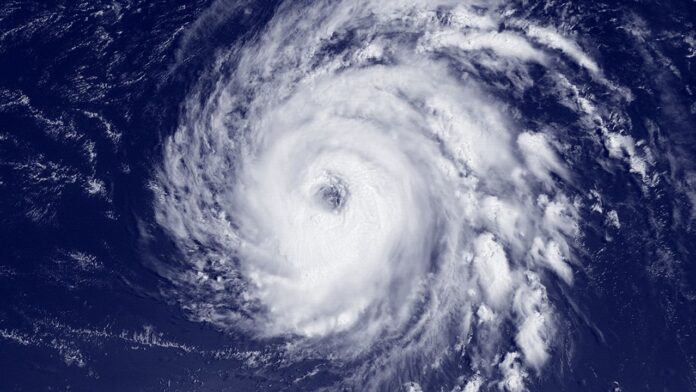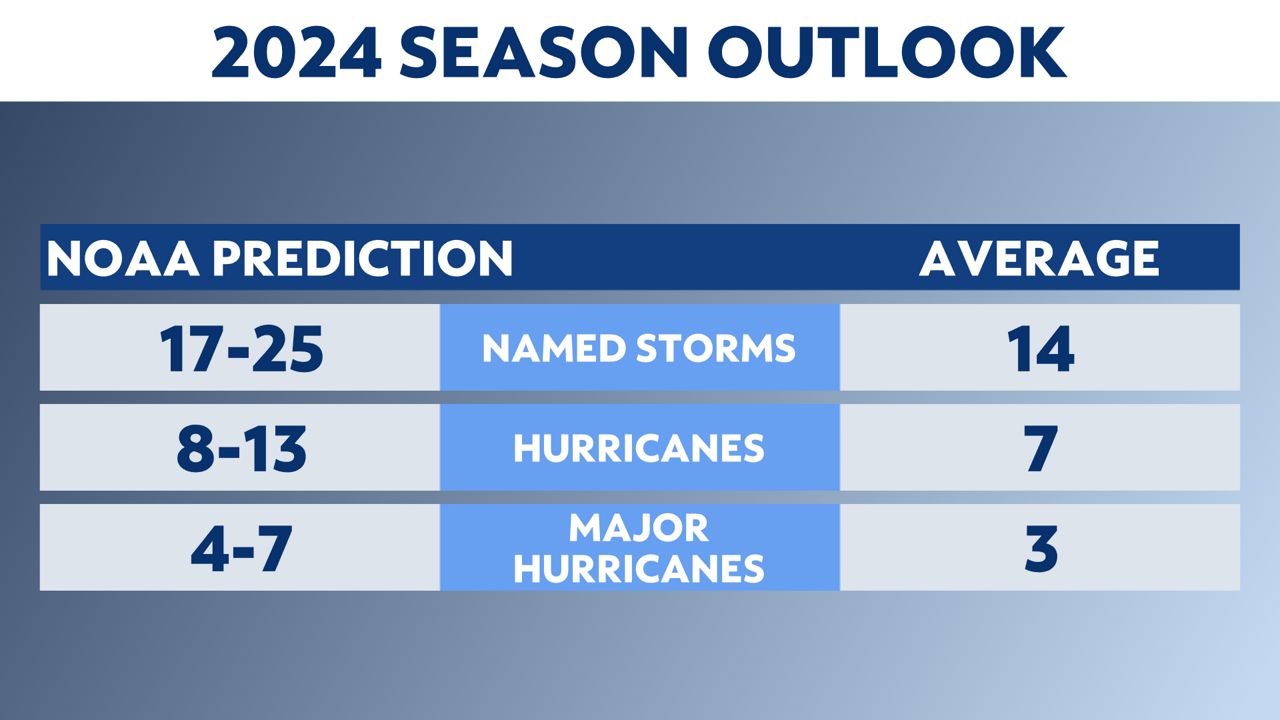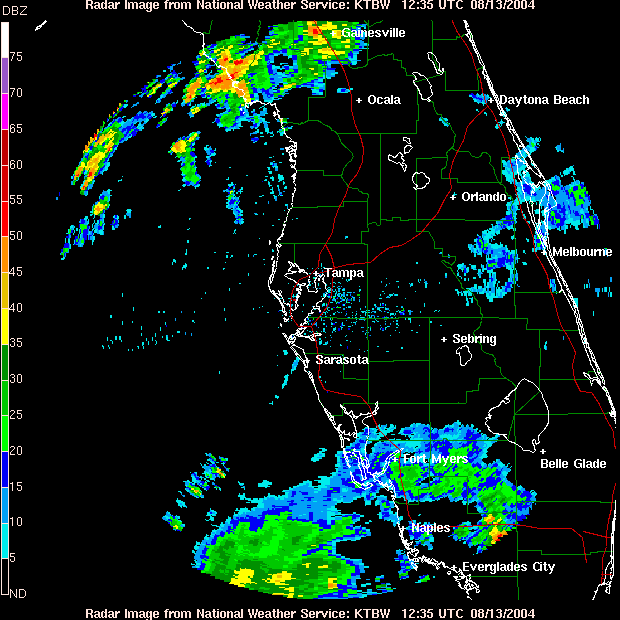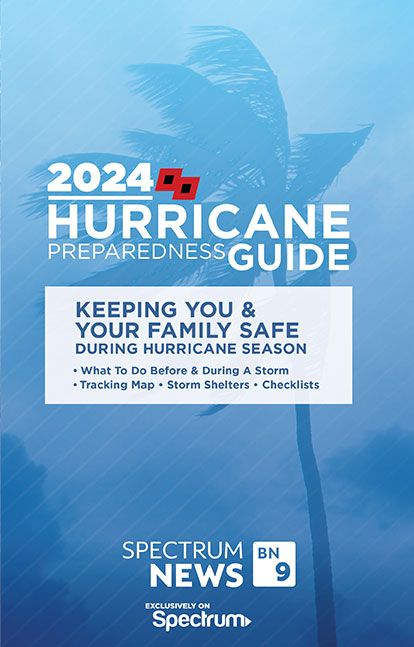TAMPA, Fla. — Hurricane Season is back! This comes off of a 2023 season that had 20 named storms and was ranked 4th for the most-named storms in a year since 1950. During the 2023 Hurricane Season, Florida only had one major storm impact the state, and that was Hurricane Idalia. It made landfall in Florida’s Big Bend region as a Category 3 on August 30th near Keaton Beach, Florida. The powerful storm left a trail of debris. In the town of Horseshoe Beach, houses were split in half and canals were filled with cars and debris. Water rushed into nearby cities and towns like Steinhatchee. The storm surge levels reached levels near 10-feet! Devastating storm surge was seen across Taylor and Dixie Counites as well.
Video Courtesy of WCJB via CNN
As many here in Florida continue to rebuild from the damage these past couple years, local, state and federal authorities all say now is the time to get ready for whatever may come our way this year.
From supply kits to home insurance, preparing for the Atlantic Hurricane season isn’t a one-day project, but it doesn’t have to be difficult. Spectrum Bay News 9 has everything you need to know to stay safe.
Plan ahead and stock up
When a storm gets a name, all eyes are on the tropics. As the storm approaches, store shelves could empty. So, it’s best to buy everything you’ll need — and want — to have on hand way ahead of time. You don’t want to be caught trying to stock up last minute.
Here’s a list of all the basics:
Supply Kit Checklist
- Flashlights and extra bulbs
- Battery-operated radio
- Battery-operated lanterns
- Extra batteries (various sizes)
- Wind-up or battery-powered clock
- Matches
- First aid kit
- Duct tape
- Rain gear
- Plastic garbage bags
- Fire extinguisher
- Scissors
- Can opener
- Clean clothes
- Extra blankets and pillows
- Heavy gloves
- Food
- Bottled water (one gallon/person/day)
- Two coolers (one for drinks, one for food)
- Canned foods
- Bottled juice
- Dry pet food
What we could be up against
Now, as we prepare for this storm season, it’s good to know what we could be up against. Here’s a look at NOAA’s 2024 predictions, released just over a week ago.
Earlier this year, Colorado State University released their own predictions saying they expect 23 named storms this year. Researchers there say there could be 11 hurricanes and five category three or higher “Major” hurricanes.
Back on May 23rd, the National Oceanic Atmospheric Administration released their outlook as well. They are predicting an 85% chance of an above normal season. They are also forecasting a range of 17-25 named storms, of which 8 – 13 could become hurricanes, including 4 – 7 being major hurricanes (Category 3 or higher).
ACE Formula
When it comes to how active a hurricane season will be, there is a lot more to it than just counting how many storms form. There’s a formula that meteorologists use and it is called “Accumulated Cyclone Energy” or ACE. Spectrum Bay News 9 Meteorologist Josh Linker explains the formula:
Tracking storms
One of the things that has changed over the years is how we track storms. We always try to make things very simple and clear for our viewers, so you feel prepared and safe.
Spectrum Bay News 9 Meteorologist Diane Kacmarik explains how our techniques have improved:
LA NIÑA Impact
Global weather patterns impact our hurricane season. Our weather experts are predicting that La Niña is on its way this summer.
La Niña and El Niño have to do with the water temperatures of the tropics in the Pacific Ocean. Spectrum Bay News 9 Meteorologist Brian McClure explains how this could impact this hurricane season:
Protecting your home
You always want to prepare, no matter what the hurricane season is expected to look like. And that means making sure your home is secure.
In April, Governor Ron DeSantis signed a bill into law approving $200-million more for the “My Safe Florida Home Program.”
The program helps Floridians replace roofs, harden their windows and doors, and make other improvements to their houses and ultimately lower insurance costs.
Since May 2022, the state has invested over $600-million in this program.
Home Insurance Claim Checklist
- Have your policy number available
- Contact your insurance company as soon as possible
- Make a list of damages and document with photos
- Fill out and return all claims forms promptly
- Ask questions if you don’t understand the process
Checklist for Securing Your Home
- Remove outdoor items
- Trim dead branches from trees
- Install shutters or board up windows
- Fill gas tanks and extra containers
- Withdraw extra cash
- Move furniture away from windows
- Store important documents and valuables in waterproof containers
Wind vs. Water
When it comes to hurricanes, they are usually rated by their sustained wind speed. But, water is the number 1 reason why people die during tropical cyclones and that could be from storm surge, flooding or high surf.
Water can recede from our beaches, causing a reverse storm surge situation which can also be dangerous. Spectrum Bay News 9 Meteorologist Kyle Hanson explains the different wind and water threats:
Beach dune systems
As we just learned, storm surge can cause a lot of damage to our beaches. Pinellas County spent $36-million restoring its beach dune system after Hurricane Idalia last August.
A few months later, a winter storm washed away half of those newly constructed dunes. So, what will happen if a storm hits later this year and washes away the rest? Spectrum Bay New 9’s Josh Rojas went to Indian Rocks Beach to find the answer:
Elevating homes
If you live in an area the frequently floods, you are encouraged to elevate your home to protect it from water damage. Citrus, Pasco and Pinellas all have programs to help residents do this. Spectrum Bay News 9’s Nick Popham looks at what some people in the area are doing to rise above the issue:
Issues facing seniors
The message from local emergency managers is to be prepared well before a major storm is in the forecast.
But for some demographics, that’s easier said that done. Spectrum Bay News 9’s Cait McVey took a look at the issues facing seniors at home and how they can stay safe this hurricane season:
Evacuations
Tropical weather is the price we pay for living in paradise. But do you know where to go if you have to evacuate? The threat of storm surge is why our coastline communities are told to leave. It’s important that you know if you live in an evacuation zone and which one.
We have made this really simple for you. Just visit our storm season page and type in your address to find your evacuation zone. If you are in one, it is critical that you listen to evacuation orders when issued. Now is the time to figure out your zone and make a plan.
Recovering from Idalia
Hurricane Idalia impacted Tampa Bay and our Nature Coast as well. One of those communities hit hard was in Citrus County. When it comes to hurricane season, we always talk about protecting homes and buildings, but what about everything that’s inside? Those things that cannot be replaced. Spectrum Bay News 9’s Saundra Weathers talked with the Citrus County Historical Society about how they are working to preserve history while preparing for this storm season.
Looking back at 2004
This year marks 20 years since Florida saw one of the most intense hurricane seasons on record. Four storms impacted the Sunshine State, all within a six-week period.
Hurricane Charley was the first. It was expected to make landfall in Tampa Bay, but on August 13th, the Category 4 storm slammed into southwest Florida and devastated places like Captiva Island.
Then, just three weeks later, Hurricane Francis hit Florida on September 5th. It made landfall as a Category 2 storm at Hutchinson Island.
Hurricane Ivan would then follow as a Category 3 hurricane, hitting the Florida Panhandle on September 16th.
Hurricane Jeanne would be the fourth named storm to hit our state that year. It made landfall in Hutchinson Island, just two miles from where Hurricane Frances had it 20 days prior.
Spectrum New Bay News 9’s Jeff Butera talked with some Florida residents who say their memories of the “Summer of Hurricanes” are as vivid today as they were two decades ago:
HURRICANE CHARLEY RADAR ANIMATION
Team coverage
Spectrum Bay News 9’s Chief Meteorologist Mike Clay was a part of the team here in 2004 guiding the Tampa Bay area through the storm. In fact, Meteorologist Alan Winfield and Mike Clay were the first on TV in Tampa to call Charley missing Tampa Bay and hitting south.
Meteorologist Juli Marquez takes a look at our team coverage back in 2004:
Hurricane Guide
Keep you and your family safe during hurricane season! Downoad a digital version of our 2024 Hurricane Preparedness Guide.











